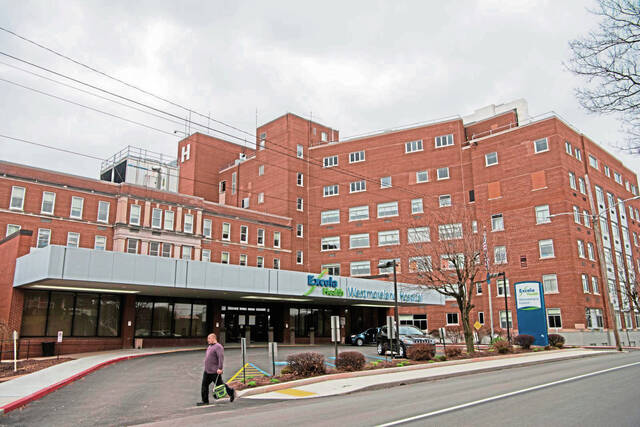https://development.triblive.com/local/westmoreland/independence-health-system-sees-shrinking-losses-but-looks-ahead-to-further-improvement/
Independence Health System sees shrinking losses, but looks ahead to further improvement

Independence Health System cut operating losses by nearly half from Jan. 1 to March 31 compared to the same time last year, continuing a steady trend of financial improvement for the merged health system.
According to the system’s most recent financial reports, Independence saw a little more than $12.6 million in combined operating losses for the three-month period ending March 31. For the same period in 2023, the system lost a total of $24.1 million.
Independence, formed by the merger of Excela and Butler health systems, formed in January 2023. Though the two sides are merged, they file separate financial reports.
Excela lost nearly $5.9 million for the three-month period, while Butler lost nearly $6.8 million. Comparatively, last year Excela lost nearly $14 million and Butler lost more than $10.1 million during the same time.
The shrinking losses continue a trend since the company’s last financial report in February. That report showed that in the last three months of 2023, Excela saw nearly $5.4 million in losses, while Butler lost just under $4 million. For those same three months at the end of 2022, Excela had $13.3 million in losses, and Butler lost $21 million.
Financial shift
The merged health system is taking positive steps financially, according to Chief Financial Officer Tom Albanesi.
“We know we’re making a lot of progress, but we’re not going to stop our initiatives until we’re performing at above a break-even level. That’s long-term, any organization in order to be sustainable has to have some operating margin to reinvest in its business,” he said. “That’s where we’re heading.”
Independence spokesperson Tom Chakurda said the system continues to move forward.
“The trends we’re seeing are encouraging, but we won’t rest on those successes,” he said. “There’s much more to be gained.”
In a bondholder meeting in early November, Independence leadership detailed a recovery plan the system put together with FTI Consulting. According to the plan, the system expects to stanch some of its financial bleeding in fiscal year 2024.
Albanesi said the system has worked hard on the expense reduction initiative, which includes future initiatives expected to impact the bottom line as the year continues. Improving patient volumes also helped increase revenues, he said, and recent negotiations with insurance companies for better rates should show fruit in the year’s upcoming quarters.
He noted there are no big staff reduction plans in the works. The system cut 226 positions in 2023.
“We’re always looking for ways to become more efficient, and so, as opportunities to do so identify themselves, we’ll always look at ways of keeping our costs down,” he said. “Our staff are our most valuable asset, though, so we have to be very careful about doing something like that.”
Independence’s two hospital presidents, Brian Fritz and Karen Allen, confirmed in August that all five of the system’s hospitals — Westmoreland, Frick, Latrobe, Butler Memorial and Clarion — would be part of its future despite the ongoing financial challenges. CEO Ken DeFurio echoed those sentiments in June 2023. Albanesi on Tuesday said there are no plans to curtail any activities at any of the five hospitals.
Causes of struggles
Independence previously has pointed to pandemic aftershocks, inflation, low reimbursements from Medicaid and Medicare and an aging regional population as some of its ongoing challenges. Albanesi highlighted the impact of inflation on the system as a major headwind.
“The entire health care industry is under financial distress right now. Expenses have risen much faster than revenues,” he said. “It’s the rampant expense inflation that’s been the real difficult thing for all provider organizations to deal with. Unlike most businesses, we’re not able to raise our prices just because our expenses go up.”
The increasing costs of labor, pharmaceuticals, medical supplies and facilities upkeep contribute to rising expenses, Albanesi said.
“We’re dealing with the same inflationary pressures that the whole economy seems to be dealing with,” he added.
Even more than a year out from the merged health system’s inception, Albanesi says there is still plenty of work to complete.
“There’s still more to do. A lot has been accomplished, but there’s still more to do in terms of looking at efficiencies,” he said. “You can’t possibly do everything at once, in spite of even best intentions.”
Copyright ©2025— Trib Total Media, LLC (TribLIVE.com)
